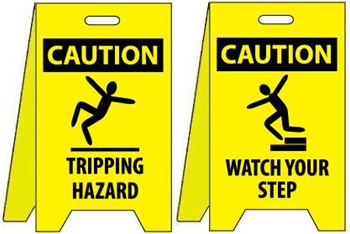Always provide support to team members to ensure goals are met.
Describe organisational policies and procedures within your workplace that promote cooperation and good relationships.
A code of conduct is always put in place within the workplace so that employees understand what is acceptable to do. This can be covered in the employee guide book and people are protected via legislation. Gaining client feedback can improve strategies for the company and provide constructive criticism. For example, a client may say there wasn't staff working an event; this problem can be fixed for future events.
Set team goals for everyone to participate in and send out weekly reminders. This will only be successful if there is quality communication going on between team members and encouragement.
Follow legislation such as the Anti-Discrimination Act to be fair towards all employees and make them feel welcome in the work environment.
List 3 work group members within your organisation. Explain;
Event Co-coordinator
Event Planner
Event Manager
-Responsibilities in the workplace
Event Co-coordinators are important because they manage all the staff and work in the public/private sector.
The Event planner is responsible for choosing locations, organizing transport, catering and the financial side (keeping the budget in-check).
The Event Manager works closely with the Event Co-coordinator to ensure all the details and needs of the client are met.
-Duties within the workplace
As part of this role, they must coordinate any details to ensure the event goes smoothly and is a success.
Their duties include communicating with clients over the phone, online and in-person. They must make decisions surrounding the event and negotiate deals.
The duties for a event manager is to look after the schedule of the staff and team members. While also helping out with paper work related to event planning.
-Relationship to other work group members in the workplace
This is the highest role and they must overlook the work of other employees within the company.
They have a vital role and would have to work with all staff members to tell them how they want things done. For example, design of the location.
The manager must talk to staff about any conflicts and find a solution.
-How work group members support each other
As part of a team, the Event Co-coordinator must be hands on, while offer assistance to all members and communicate with them.
They could offer resources such as contact details, numbers for seating or inspiration behind ideas for the event.
They must listen to employees, provide help and guide the staff to reach any target or goals.
List 5 ways you can provide support to team members and give an example of each.
1. Positive attitude e.g. Smile and use friendly tone when asking questions.
2. Celebrate success e.g. Throw parties for people who get promoted.
3. Provide assistance e.g. Help find a number of a cater or spend extra time with them on projects.
4. Guidance e.g. Give a team member your phone number so they can call when they need advice for plans.
5. Offering resources e.g. Send relevant files and images to team member via email.

Provide 3 examples of seeking feedback from inside and outside of your organisation.
- Customer feedback forms
- Service Monitoring
- Informal performance appraisals from people at the event
- Phone call from clients
Describe how feedback is analyised and actioned in your organisation.

Collect Evidence, Analyse and Act on it.
While looking at the image shown above its clear that there several ways to approach getting feedback. One way to gain feedback is by handing out or sharing surveys. For example, after an event pass out a little survey for people to tick boxes related to their enjoyment and satisfaction of the event.
Another way is to go around and communicate with people who are at the event. You can also stand back and observe people's reactions. For example, watch people eat the food and see if they seem to be going back for seconds.
Have your organisation send out formal performance appraisals or feedback forms. Then spend time reading over the comments or suggestions to help improve your services. For example, clients may have a problem with your choice of wait staff serving at the event because they were not walking around the crowd but instead, talked a lot.
If that's not enough, a good way to reach more people is to ask online what they think of your events. This can be achieved by using social media such as Facebook or Twitter. Let people rate your business services by creating a company page via Facebook and add posts related to the events.
All of these are possible ways to collect feedback and consultation/meetings can discuss the results. From there you can make changes or improves to how you approach event management, so that everyone wins.
Give examples of communication strategies you would use to overcome possible barriers or conflict with; A person with a disability
- Ask them if they understand
- Simplify any explanations
- Avoid discriminating language
A person with a culturally diverse background
- Use body language (only if needed)
- Avoid using judgmental comments
- Hold meetings
An angry colleague or customer
- Be polite
- Listen and answer any questions
- Offer a solution to the problem or someone who can assist them.
A person with whom you have had a disagreement with in the workplace
- Tone of voice
- Type of comments
- Avoid negative body language

Describe relevant government legislation of that may affect aspects of the business operations. For example:
- Anti-discrimination legislation
-Ethical principles
- Codes of conduct
- Privacy laws
- Occupational Health and Safety (WHS)
- Environmentally sustainable work practices
This question is answered via slideshow show here:
Sources:
http://www.slideshare.net/AshleighG/events-management-team-job-roles-26473904 (accessed on the 15 Sept 2014)
https://www.humanrights.gov.au/guide-australias-anti-discrimination-laws (accessed on the 15th Spet 2014)









